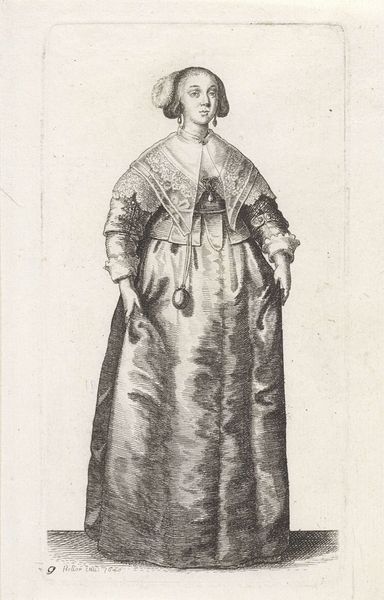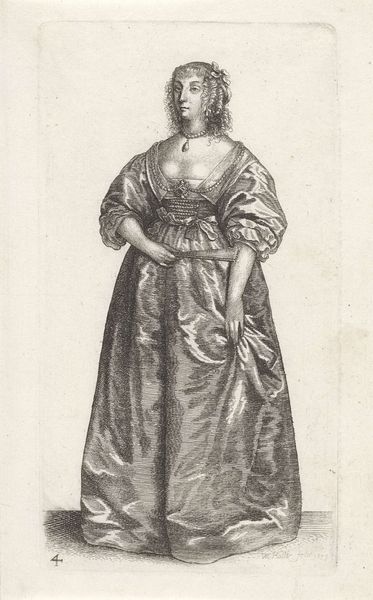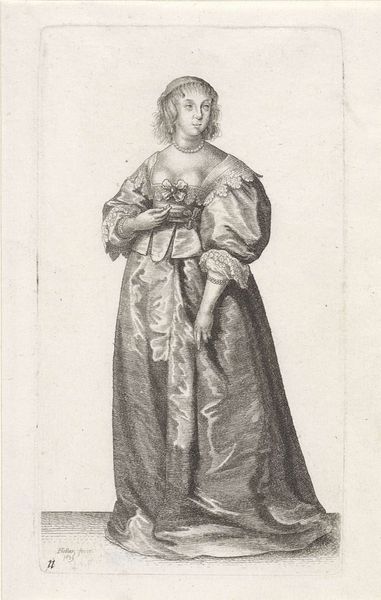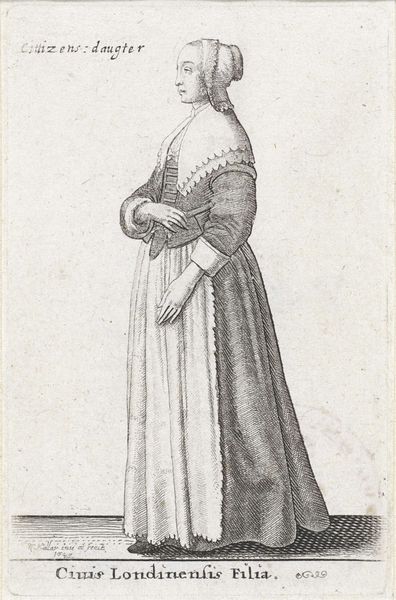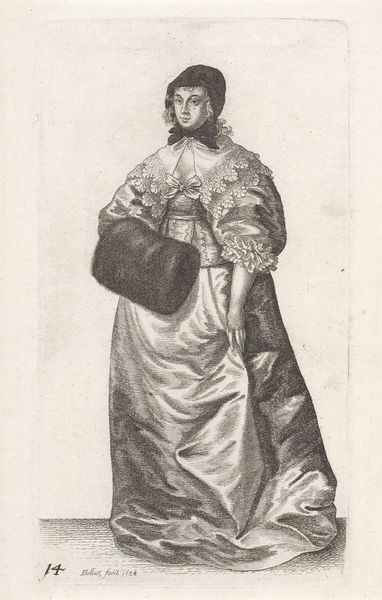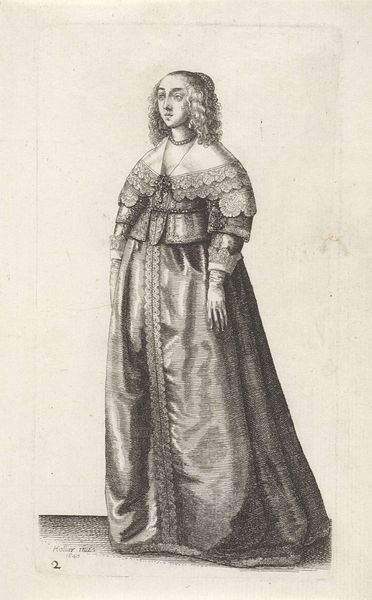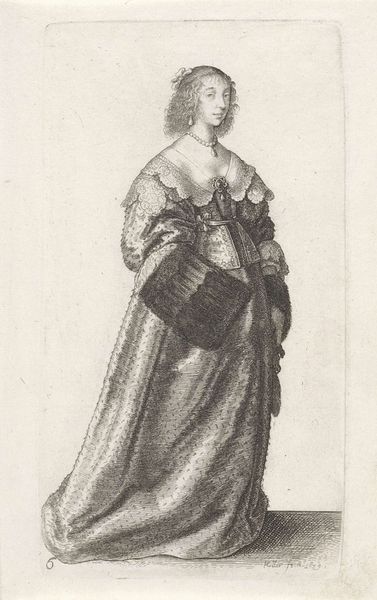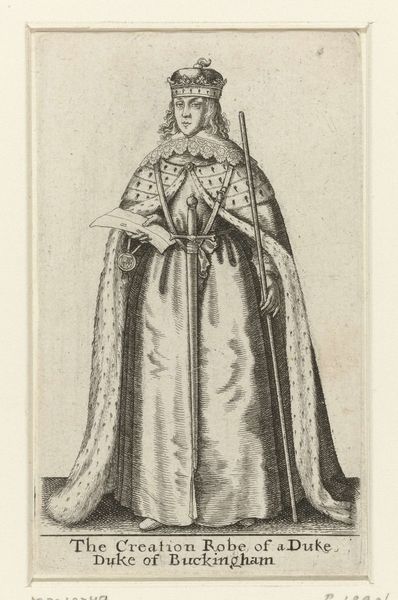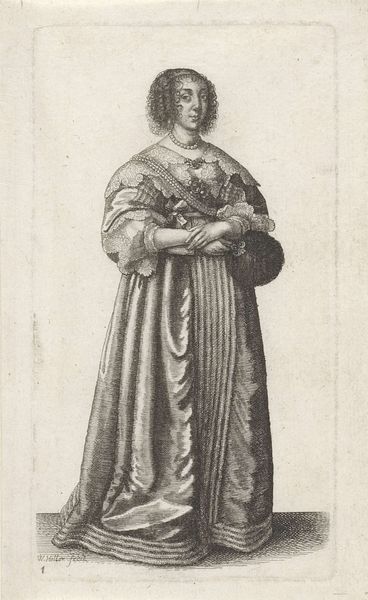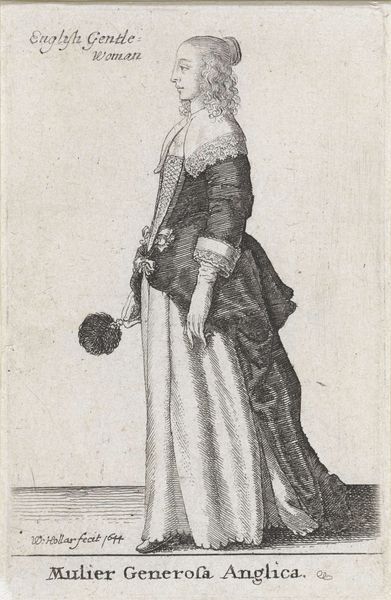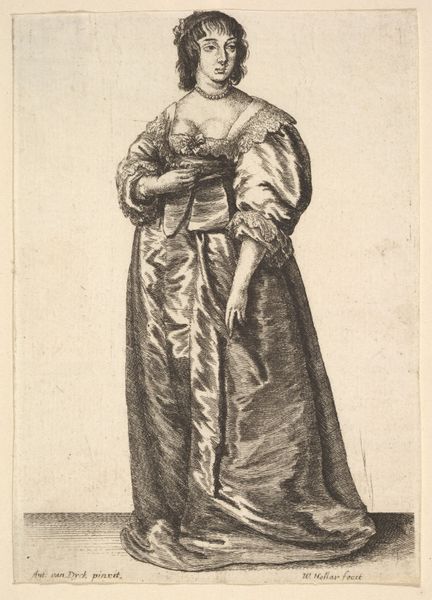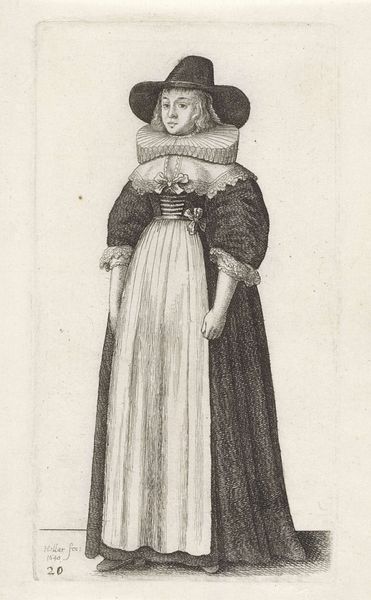
print, engraving
#
portrait
#
baroque
#
dutch-golden-age
# print
#
figuration
#
form
#
history-painting
#
graphite
#
dress
#
engraving
Dimensions: height 133 mm, width 72 mm
Copyright: Rijks Museum: Open Domain
Editor: Here we have "Engelse vrouw van stand met lint om het middel," created around 1639-1640 by Wenceslaus Hollar, a print currently held at the Rijksmuseum. I’m really struck by how much information is conveyed through such fine lines. It's almost photographic in its detail, but undeniably from another era. How should we interpret this portrait in its historical context? Curator: This portrait provides a window into the societal norms and aspirations of the 17th century. Hollar's work circulated widely and shaped perceptions of status and identity. Note how the subject's clothing, particularly the luxurious fabric and lace, signifies her wealth and social position within a highly stratified society. What might the print’s accessibility tell us? Editor: It's interesting that you mention accessibility. I guess prints were a way to democratize imagery, but did owning them signify status as well? Curator: Precisely! Owning such a print indicated a degree of cultural capital. This imagery circulated within specific networks, reinforcing notions of class and gender. Moreover, it helped standardize and disseminate ideas about beauty and decorum across geographic boundaries. To whom would these images have appealed most, and why? Editor: It probably was popular with others of the upper class who saw themselves in the image, and possibly people aspiring to such status who desired insight into the styles of the elite. This makes me wonder about Hollar’s intentions—was he simply documenting fashion or making a more complex social statement? Curator: Hollar’s role is multifaceted. As an artist, he’s documenting, but he’s also actively participating in the construction of social narratives. He wasn’t just showing what people looked like, but influencing how they were perceived and understood. He, and his artwork, acted as a political player in an increasingly image-conscious Europe. Editor: That's a great point. Thinking about this piece as an active participant, rather than a passive record, really shifts my understanding of its place in history. Curator: Indeed. It allows us to appreciate the complex interplay between art, society, and power.
Comments
No comments
Be the first to comment and join the conversation on the ultimate creative platform.

